[The Ultimate Backpacking Guide:] What’s the best way to backpack? What do you need to bring? How do you pack efficiently? These are all questions that we’ll aim to answer in this ultimate backpacking guide. Whether you’re a beginner or an experienced hiker, read on for our top tips and advice on what to bring with you, how to pack your bag, and the 10 essentials that no backpacker should be without. So, let’s get started!
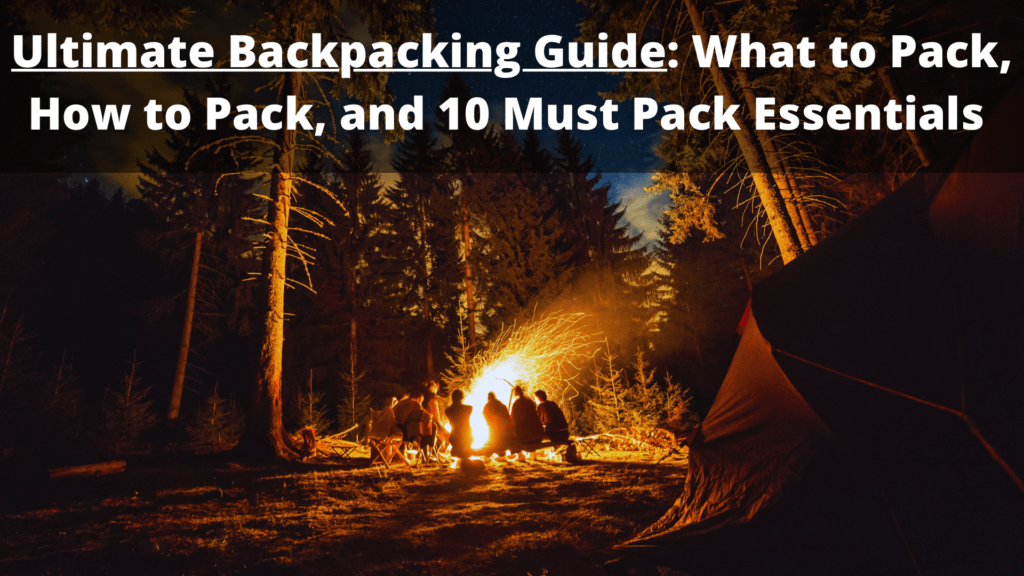
What to bring on your backpacking trips
Of course, what you need to bring on your backpacking trips will depend on the specific destination and activities you have planned. However, there are some general items that every backpacker should consider packing. Let this Ultimate Backpacking Guide show you the way…
First, you’ll need a good quality backpack that is comfortable to wear and large enough to fit all of your gear.
Next, you’ll need to pack some basics, like a tent, sleeping bag, and food. Additionally, you’ll want to bring along some essential items for safety and comfort, such as a first-aid kit, insect repellent, sunscreen, and a flashlight. Finally, don’t forget to pack your sense of adventure!
Check out our Ultimate Backpacking Sleeping Bag Guide >>
Tap Here for Our Top 4-Season Backpacking Tent Picks >>
The 10 essentials everyone should pack for their next backpacking adventure:
Backpacking is a great way to see the world on a budget, but it can be difficult to know what to pack. There are a few key things to keep in mind when packing for your first (or next) backpacking trip using this backpacking guide:
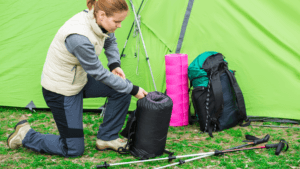
- Pack light: Backpacking trips often involve a lot of walking, so it’s important to pack light. Bring only the essentials and try to avoid anything that is bulky or heavy.
- Choose versatile clothing: Backpacking trips often involve camping, so it’s important to pack clothes that can be used for both hiking and sleeping. Choose items that are made from quick-drying materials like synthetic fabrics.
- Pack a first aid kit: This is essential for any backpacking trip. Be sure to include items like bandages, pain relievers, and antiseptic wipes.
- Bring a map and Compass: A physical map and compass is always a good idea, even if you’re using GPS. Backcountry trails can be difficult to follow, so it’s important to have a backup.
- Pack a headlamp: A headlamp is a necessity for any backpacking trip. It’s important to have a light source that can be worn on your head, so you can have both hands free.
- Bring a water filter: Backpacking trips often involve camping in remote areas, so it’s important to have a way to filter water. There are a variety of water filters available, so choose one that best suits your needs.
- Pack food that is easy to prepare: Backpacking trips often involve a lot of hiking, so it’s important to pack food that is easy to prepare. Choose items that can be cooked quickly, like instant oatmeal or energy bars.
- Bring a pocket knife: A pocket knife can be a lifesaver on a backpacking trip. It can be used for a variety of tasks, like cutting rope or opening cans.
- Pack a sunscreen: Backpacking trips often involve a lot of time spent outdoors, so it’s important to pack a sunscreen. Choose a sunscreen with an SPF of at least 30 and apply it liberally.
- Bring insect repellent: Backpacking trips often involve camping in areas where there are mosquitoes, so it’s important to pack an insect repellent. Choose a repellent with at least 20% DEET for the best protection.
Following these tips in this backpacking guide will help you pack efficiently for a backpacking trip. Remember to pack light, choose versatile clothing, and bring a first aid kit. Also, be sure to pack a map, headlamp, water filter, and pocket knife. Lastly, don’t forget the sunscreen and insect repellent!
Check out REI’s Video on their Essentials List:
How to pack efficiently for backpacking trips
One of the most important aspects of enjoying successful backpacking trips is packing your backpack correctly. An overloaded or improperly packed backpack can ruin your trip, so it’s important to take the time to do it right. This backpacking guide offers a few tips on how to pack a backpacking backpack correctly:
- Start by packing the heaviest items first. This will help to distribute the weight evenly and prevent your backpack from becoming top-heavy.
- Pack items in a variety of sizes and shapes. This will help to fill up the space in your backpack and prevent items from shifting around.
- Use compression sacks or stuff sacks to compress clothing and other items. This will free up space in your backpack and make it easier to pack.
- Organize your items using a packing list. This will help you keep track of what you have packed and prevent you from forgetting anything important.
By following these tips, you can be sure that your backpacking backpack is packed correctly and efficiently. This will help to make your trip more enjoyable and successful.
Tips and tricks for beginners
The most important thing to remember when packing a backpack for a backpacking trip is to distribute the weight evenly.
- The heaviest items should be packed first, and then smaller and lighter items can be packed on top.
- It’s also helpful to use compression sacks or stuff sacks to compress clothing and other loose items.
- Finally, it’s a good idea to make a packing list before you start packing, so that you can keep track of everything you need to bring.
- Focus on the 10 essentials list first and then add to your inventory as the trip warrants
This backpacking guide is not all-inclusive in this area but can give you great structure to start to understand the proper way to pack your backpacking pack and from there you can build off it for future trips as your needs change.
Tap Here to Check Out Our Latest Backpacking Gear Guide and Get the Low-Down on All The Latest and Greatest Top Backpacking Gear! >>
Food and drink ideas for backpacking trips
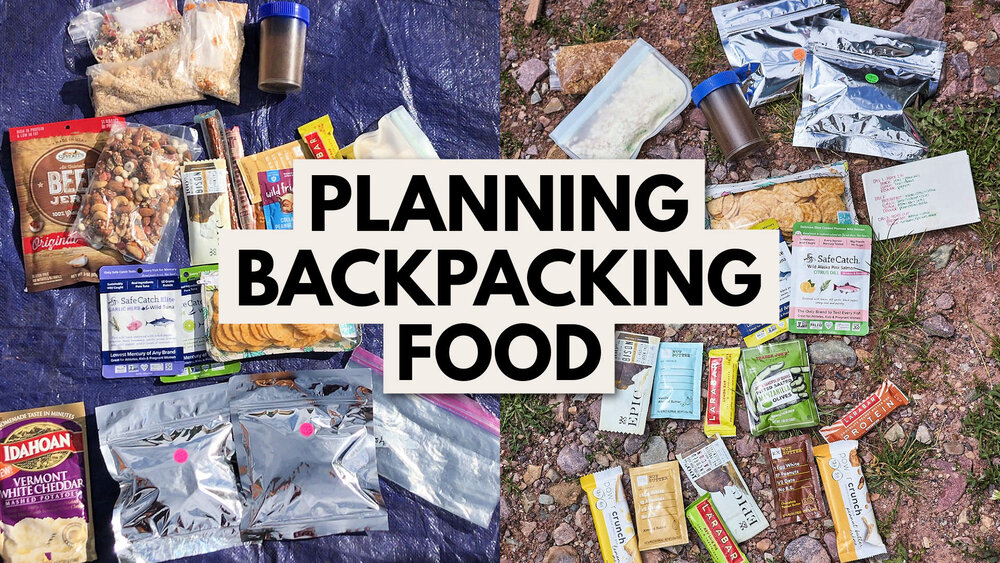
When planning what food and drink to bring on backpacking trips, it’s important to consider both nutrition and weight. This backpacking guide will give you some direction below on what to bring for nourishment. Backpacking trips often involve a lot of hiking, so it’s important to pack food that is high in calories and easy to carry. On the other hand, you don’t want to pack too much food, as this will add unnecessary weight to your backpack.
Some good food options for backpackers include energy bars, trail mix, jerky, and dehydrated meals. For drinks, water is obviously the most important, but you may also want to pack sports drinks or tea bags. It’s also a good idea to pack a small stove and some fuel so that you can cook meals in the backcountry.
When packing food and drink for a backpacking trip, it’s important to consider both nutrition and weight. By packing lightweight, high-calorie foods, you can be sure that you have enough energy for your hike. Don’t forget to pack a stove and some fuel so that you can cook meals in the backcountry!
Safety tips for backpacking trips in unfamiliar territory
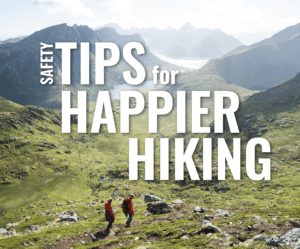
When backpacking in unfamiliar territory, it’s important to be aware of your surroundings and take precautions to stay safe. If you are hiking in an area with wildlife, make sure to keep a clean campsite and store food properly. Also, be sure to know the local regulations regarding firearms and bear spray.
If you are hiking in an area with hazardous terrain, be sure to take the necessary precautions. Familiarize yourself with the area and always hike with a partner. Be sure to bring a first-aid kit and know how to use it. And finally, always let someone know where you are going and when you expect to return.
By taking these safety measures, you can help to ensure a safe and enjoyable backpacking trip.
Ultimate Backpacking Guide FAQs:
How far should your first backpacking trip be?
That largely depends on the kind of physical shape you are in as well as other factors such as anticipated weather conditions, access to potable water, etc. A good rule of thumb is try to stick between 3-6 miles of hiking per day on your first trip. Any longer and someone not seasoned could get into some minor to moderate health trouble.
What should you not do while backpacking?
The biggest mistake most new backpackers make (and seasoned ones for that matter) is going out backpacking without a destination laid out or without a means to keep yourself on track to your destination. It is easier than people think to get turned around and lose your bearings in the back country so make sure you know your destination, visible landmarks, and the bearings to get there and back either with GPS and/or map and compass.
What are the big 4 in backpacking?
The Big 4 in Backpacking typically refers to the four major items you bring on backpacking trips that can be a focus when determining how to “cut weight” on your pack. Even just one pound of weight reduction can mean miles of more comfort, less stress on joints and muscles, and overall better experience. The Big 4 are: Pack, Tent, Sleeping Bag, and Sleeping Pad.
How to have the best time on your backpacking trips
There are a few things you can do to make sure you have the best time possible on your backpacking trip.
- First, choose a destination that you are excited about and do your research to make sure it is the right fit for you.
- Second, pack light so that you can enjoy the hike and don’t have to worry about carrying a lot of weight.
- Third, make sure to bring plenty of food and water so that you are well-nourished for your hike.
- And finally, take the time to enjoy the scenery and company of your fellow hikers.
By following these tips, you can be sure to have a great time on your next backpacking trip!
Check Out REI’s Backpacking Checklist Below:
Ultimate Backpacking Guide Summary

The most important thing to remember when packing for a backpacking trip is to distribute the weight evenly. The heaviest items should be packed first, and then smaller and lighter items can be packed on top. It’s also helpful to use compression sacks or stuff sacks to compress clothing and other loose items. Finally, it’s a good idea to make a packing list so that you can keep track of everything you need to bring.
When planning your food and drink for the trip, it’s important to consider both nutrition and weight. Backpacking trips often involve a lot of hiking, so it’s important to pack food that is high in calories and easy to carry. On the other hand, you don’t want to pack too much food, as this will add unnecessary weight to your backpack. Some good food options for backpackers include energy bars, trail mix, jerky, and dehydrated meals. For drinks, water is obviously the most important, but you may also want to pack sports drinks or tea bags. It’s also a good idea to pack a small stove and some fuel so that you can cook meals in the backcountry.
When backpacking in unfamiliar territory, it’s important to be aware of your surroundings and take precautions to stay safe. If you are hiking in an area with wildlife, make sure to keep a clean campsite and store food properly. Also, be sure to know the local regulations regarding firearms and bear spray. If you are hiking in an area with hazardous terrain, be sure to take the necessary precautions. Familiarize yourself with the area and always hike with a partner. Be sure to bring a first-aid kit and know how to use it. And finally, always let someone know where you are going and when you expect to return. By taking these safety measures, you can help to ensure a safe and enjoyable backpacking trip.
By following the tips in this guide, you can be sure to have a great time on your next backpacking trip!
What’s you’re next backpacking adventure you are planning to go on? Let us know in the comments below!

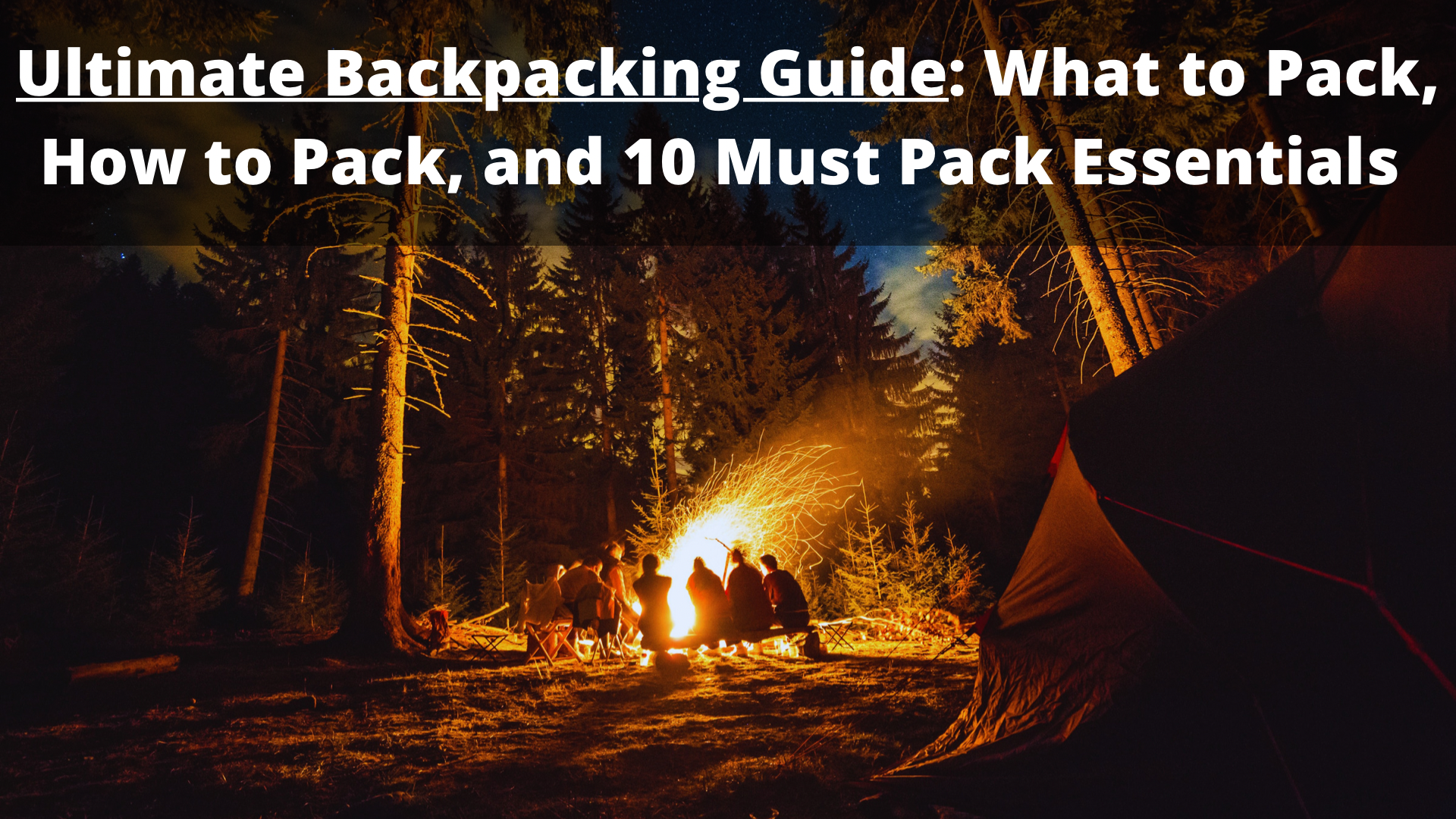
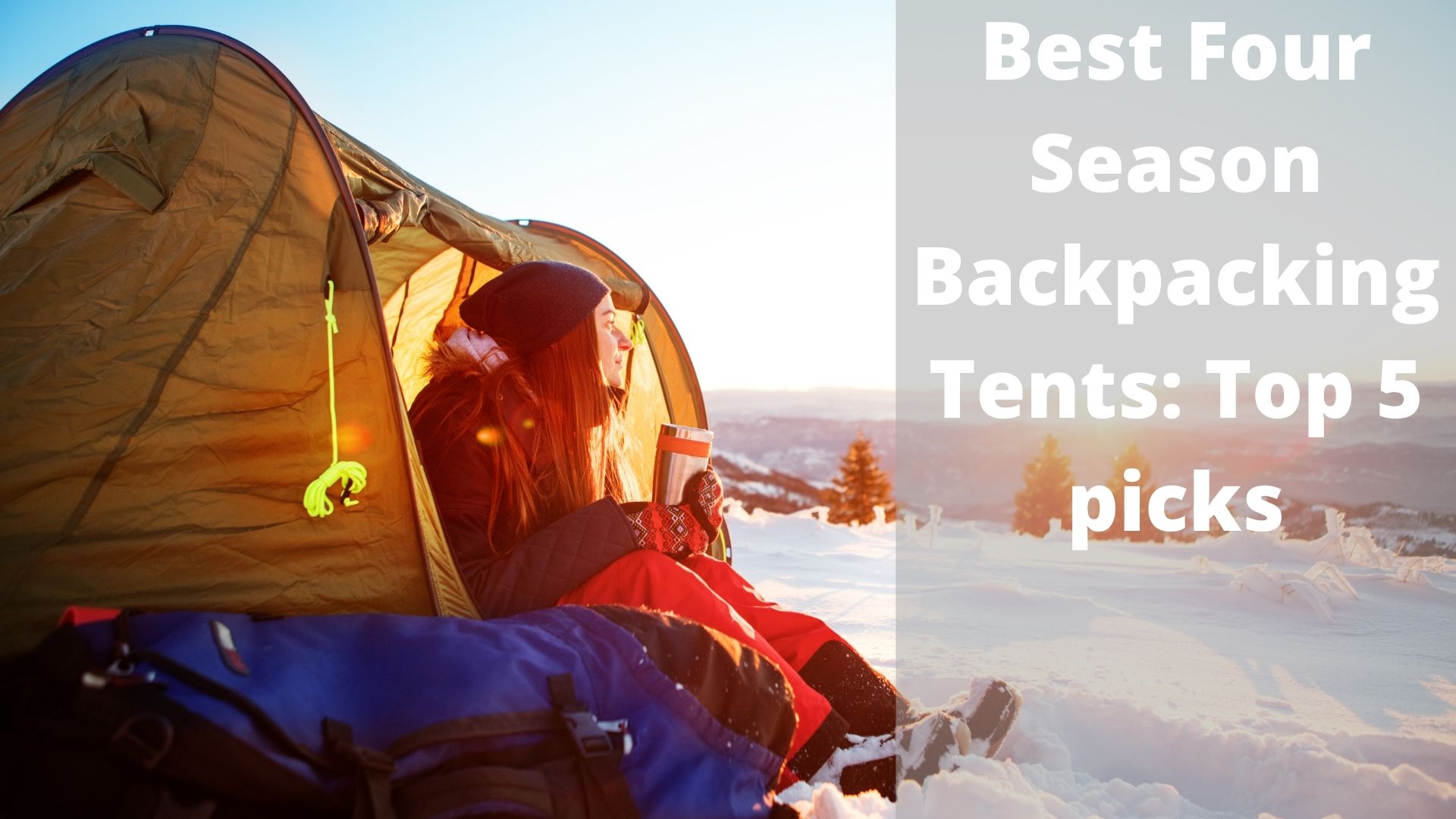
Hi…Great information within this article!
Do you provide any in-depth reviews on any of the items/ products that you list? Such as comparing different types of sleep bags, like a mummy bag vs a regular one? Not necessarily brands, but are there certain types that are better for a particular age group or camping situation?
In addition, do you offer links to sites like Amazon or other merchant sites to compare prices, so one can make an informed purchase decision?
Thank you
Those are great questions Mark! As an up-incoming authoritative site in the outdoor/backpacking space we are still in the process of generating high quality content for our readers around topics like this so please bookmark our site and check back regularly!
We do have a couple articles with some price comparisons form some of these products listed and more are planned very soon!
Thanks for the kind words!
Ok, will do!
-Mike
It is an informative and detailed guide about backpacking, how to pack, and how to pack them.
It is thorough and thoughtful. Should one prepare for a sudden change of weather to heavy rain? Maybe carry a raincoat or umbrella along.
Anything you think of, a thing of you are adding weight to your backpack. Don’t forget your medications or vitamins and supplements (I missed them once during a trip).
It is not easy to carry a loaded bag on a trail if you are not experienced. Should one carry an extra pair of shoes in case?
D you think checking out showstoppers may be worth it?
I love your guide to the well-organized backpack with essentials with recommendations to keep it light.
Hello Anusuya!
These are all great additional tips! I appreciate your input and will look at adding some of these to some extended trip or particular trip reviews. Good question on the extra pair of shoes. I always recommend well-made, all weather hiking shoes/boots and only one pair as almost any sturdy shoe will add a lot of weight and bulk to your bag.
I would, however, make sure you have extra pairs of socks as you want to always keep your feet warm and dry whether it is due to rain/snow or just sweat from a long hike; changing socks often is a must!
Thanks this is such a detailed, comprehensive article – certainly worth bookmarking as a go to guide before setting out on the trail. Love the ’10 essentials everyone should pack for their next backpacking adventure’, this is really useful. I also think it’s an interesting eye-opener thinking about the tips and tricks about packing and safety etc… which shines a light on some core life skills that are beneficial in so many ways. So many of us rely on our gadgets to get through the day so good to see these skills and knowledge being put to good use. Thanks.
Backpacking is a great way of traveling around and seeing parts of the world or explore nature. Anybody preparing for a backpacking trip, will find this guide helpful.
A tent and a sleeping bag would be required if you are going camping, but if you are on a trip where you are staying in hostels, a tent would not be necessary. There is also a big difference between packing for a day’s hiking in the mountains, compared to an extended trip.
There are so many things that one needs to remember when packing your backpack, so making a list of everything you need, is very important. Thank you for sharing this helpful guide.